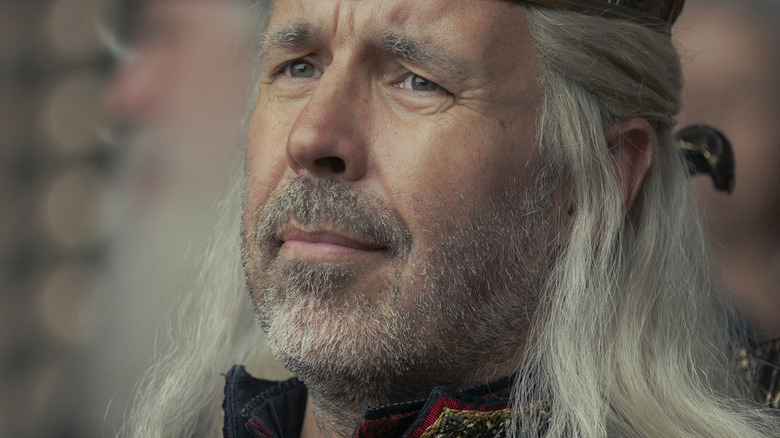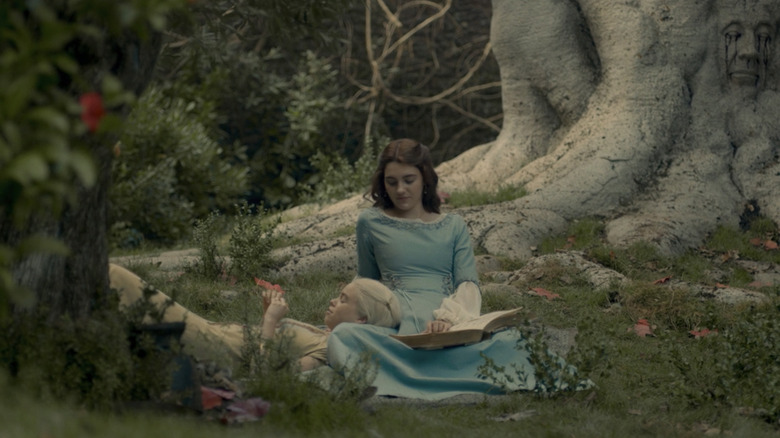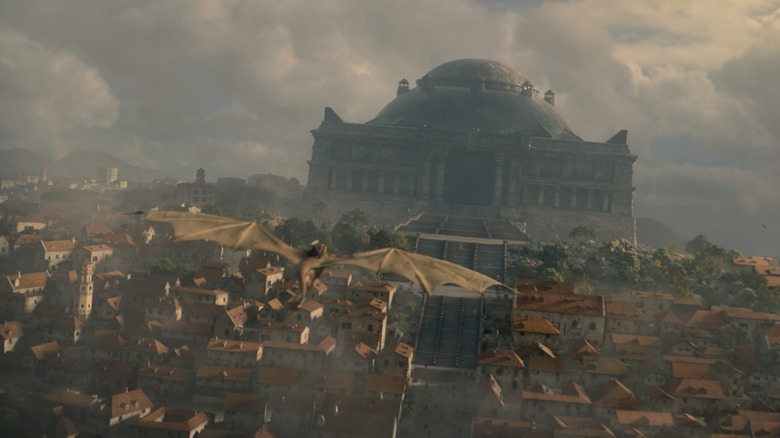How House Of The Dragon Broke Game Of Thrones Canon In This One Bizarre Way
Considering the absolutely abysmal fan response that the final season of "Game of Thrones" received, it's not surprising that many viewers were skeptical of the latest show to come from George R.R. Martin's "A Song of Ice and Fire" series — the Targaryen-central "House of the Dragon." Indeed, the series was already dealing with some ugly backlash before its premiere, as the casting of Lord Corlys Velaryon (a white character in the books, who is played by British actor Steve Toussaint within the series) was met with a slew of racist messages across social media.
In addition to this hateful backlash, many other fans claimed that they refused to watch the show on principle alone, citing the unsatisfying conclusion to "Game of Thrones" and the way that series seemed to change dramatically once the showrunners ran out of material from the book series. Fortunately, one major difference between the two shows is that "House of the Dragon” is based on a fully-completed story, which is chronicled throughout Martin's "Fire & Blood."
As such, one might assume that "House of the Dragon" will have a much easier time sticking to the canon of "A Song of Ice and Fire," which ought to appease some of the more vocal skeptics of the series. Unfortunately for some, it appears that the show has already broken from the book series' canon in its very first episode.
A weirwood tree that shouldn't exist
In Episode 1 of "House of the Dragon," there's a particular scene where a young Rhaenyra Targaryen (Milly Alcock) and Alicent Hightower (Emily Carey) read a book together deep within the Red Keep's Godswood. Behind them is a white weirwood tree with a face carved into it, which is traditionally worshiped by followers of the old gods, such as the Starks of Winterfell. The inclusion of this particular weirwood not only breaks the canon of the book series but of "Game of Thrones" itself — in both projects, the King's Landing/Red Keep godswood does not have a weirwood and instead uses an old oak wrapped in smokeberry vines.
In the books, we see this peculiar oak substitute during Eddard Stark's stay in King's Landing, when he and his daughters pray to the tree and give their thanks for Bran Stark's miraculous survival ("A Game of Thrones," Chapter 25, Eddard V). We also see the Red Keep's Godswood in the 4th season "Game of Thrones" episode "Two Swords," when Sansa Stark (Sophie Turner) visits it and conspires with Ser Dontos Hollard (Tony Way). In both appearances, there is no mention or sight of the massive weirwood we see in "House of the Dragon," making its inclusion in the prequel series a bizarre break from the established canon of both the show's predecessor and the books themselves.
Although some fans might chalk this up to the simple fact that "House of the Dragon" takes place hundreds of years before "Game of Thrones," the other major red flag for the weirwood's inclusion is that we already know what happened to most other weirwoods in southern Westeros, and it is unlikely that this particular tree was spared.
The existence of this weirwood doesn't line up with the series' timeline
Although neither the books nor the show have specifically addressed why the Red Keep doesn't have a weirwood tree, until this point, it was implied that the weirwood of King's Landing (if it ever had one in the first place) was destroyed by the Andals when they first came to Westeros. George R.R. Martin's "The World of Ice & Fire" explains that when the Andals first invaded Westeros, they burnt down most of the indigenous peoples' godswoods in order to make room for the Faith of the Seven.
The destruction of these Godswoods was more concentrated in the south than it was in the north — though the text does also clarify that many of the more important southern castles were allowed to keep their godswoods as a gesture of good faith. Although some might take this to mean that the Red Keep's weirwood was spared and might have actually existed during the time of "House of the Dragon," it's important to remember that Kings Landing as a whole wasn't even built until the invasion of Aegon the Conqueror, several thousand years after the Andals destroyed the majority of godswoods of the south.
So, why would the Andals spare this specific tree, in a godswood for a castle that was not yet built? The inclusion of this weirwood tree in "House of the Dragon" amends the history we thought we knew about King's Landing and establishes that at one point in time, there was a weirwood growing deep within the Red Keep. That said, it will be interesting to see what becomes of this tree as the series goes on, as its absence in "Game of Thrones" means that at some point, we'll likely find out exactly why it disappeared.


